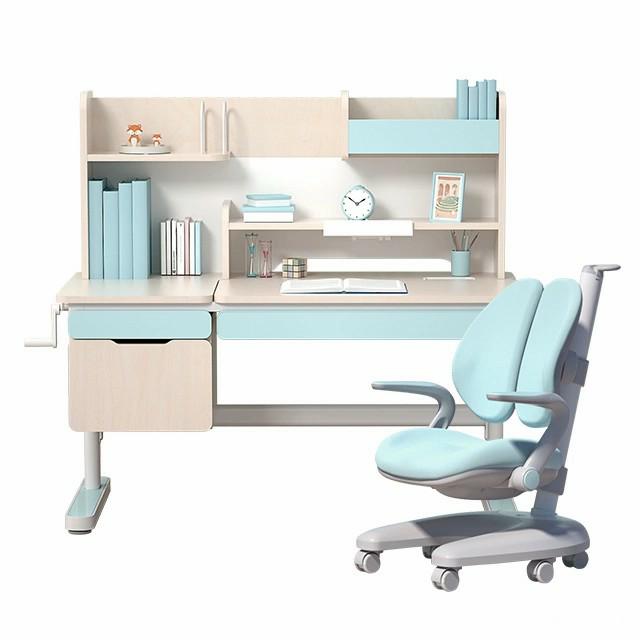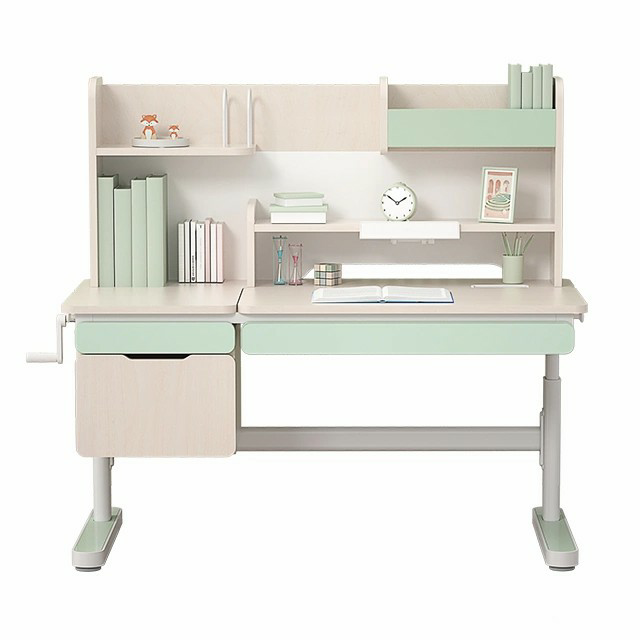Igrow's desks and chairs can be raised and lowered at will to accompany children's growth. The height of the tables and chairs can be adjusted freely to meet the height requirements of all age groups. Selected environmentally friendly plates, fresh companionship, healthy growth, high quality and safe use, create a healthy learning environment for children,
The main material of the igrow student desk and chair is solid wood, the function of the seat, the sitting height can be adjusted, the seat depth of the Adjustable Study Table can also be adjusted, and the length of the table top is 110 to 120 cm. Student desks and chairs with bookshelves, with side tables, table functions can be raised and lowered, movable, and inclined. There are multiple choices of colors. The desktop angle, less than or equal to 50 degrees.
Children Drawing Desk,Adjustable Study Table,Multifunction Children Adjustable Desk,Bedroom Study Desk Igrow Technology Co.,LTD , https://www.igrowdesks.com


Why is the fracture? The plaster 3D printing bracket is light and comfortable.
The term "a hundred days of injury and bones" refers to the long recovery period often required after a fracture. Traditionally, patients are immobilized with a hard cast wrapped in thick bandages, which can be uncomfortable and inconvenient. However, a new solution is emerging—3D printed braces that are changing the way fractures are treated.
Plaster casts have long been the standard for bone immobilization, but they come with several drawbacks. They are difficult to clean, restrict airflow, and make it hard to dress, especially during extreme weather. Scott Summit, who suffered an arm injury and spent six months recovering, had a unique opportunity to rethink this process. As the design director at a 3D printing company called Bespoke, he used his experience to create a custom 3D-printed brace.
"3D printing opens up so many possibilities," Summit explained. "Just like how 3D printing expanded into various fields back in 1997—space, art, fashion, dentistry—it's now making its mark in healthcare. Every person is different, so there's no one-size-fits-all solution here."
Summit started by scanning his injured arm in 3D. The resulting brace was designed to support the arm through three key points, allowing the ligaments to heal gradually. Unlike traditional casts, this lightweight bracket doesn't fully encase the arm, ensuring breathability and ease of movement. At just 5mm thick, it’s nearly invisible and looks more like a piece of modern art than a medical device.
"This product not only simplifies the process for doctors but also makes the patient feel more comfortable," Summit said. "While I can't say it's the best solution, it definitely offers a better alternative to traditional methods."
Doctors have also praised the innovation. With the 3D-printed stand, patients can shower normally and even apply medication directly to the wound—something that wasn’t possible with traditional casts. Summit found that he could go about his daily life without any restrictions.
Although he didn’t reveal the cost of the brace, he shared his excitement about the progress made over the past seven years. "When we first imagined using 3D printing to solve this problem, it seemed almost impossible. But now, it's not just a dream—it's real, and it's working better than conventional treatments."